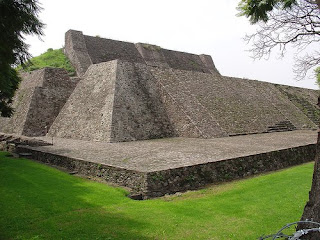When I first stepped inside the observatory, there is a huge pendulum called Foucault Pendulum. The Foucault Pendulum recreates an 1851 demonstration by French physicist Jean Bernard Léon Foucault that gave the first direct proof that Earth rotates on its axis. It is a 240-pound partially-hollow, gun-metal sphere suspended from a 40-foot steel wire.The wire is attached to the ceiling, and a ring magnet above the ceiling keeps the pendulum in motion without influencing the direction of its swing. The pendulum knocks over a peg roughly every seven minutes. From the audience's perspective, it looks like the direction of the pendulum's swing is changing, while the truth is that the motion of earth is rotating the pet into the path of the swinging pendulum. If we're at the North and South Poles, it would take one day for the pendulum's direction of swing to appear to rotate 360 degrees. However, as we move closer to the equator, the rotation will take longer because of the change in latitude. Here in Los Angeles, it will take 42 hours.
Here is a video of the pendulum that I took
On the right hand side of the building, there is a hallway with different exhibitions of the space. One of them explains how eclipses work. Eclipses are astronomical spectacles that happen when one celestial object moves into the shadow of another. These awe-inspiring events happen during precise alignment of the Sun, Earth, and Moon. Solar eclipses occur when Earch moves into the Moon's shadow. And we see lunar eclipses when the Moon move into the Earth's shadow.
Solar eclipses happen the moon passes in front of the Sun, and we will only be able to see a total solar eclipse if we are in the narrow path of the totality (which is the umbra area in the picture). During a total eclipse, the Sun disappears completely for up to several minutes. "Eclipse chasers" would travel great distances, often to remote places, to experience a few minutes of totality and see the solar corona. If you don't intentionally go to a total solar eclipse, you will likely never see one, while on the contrary, moon eclipses happen much more often, and it can be seen from more than half of the earth. Griffith Observatory created a lively representation of how eclipses work, and I took a short video of it.
I think Griffith observatory is a great place to go if you want to learn more about the space! The exhibits there are for educational purposes, thus theyre 'll very simple, straight forward, and easy to understand. Of course, you can also get an extra bonus of the fantastic and unparalleled view of Los Angeles city!
Proof of attendance:





















